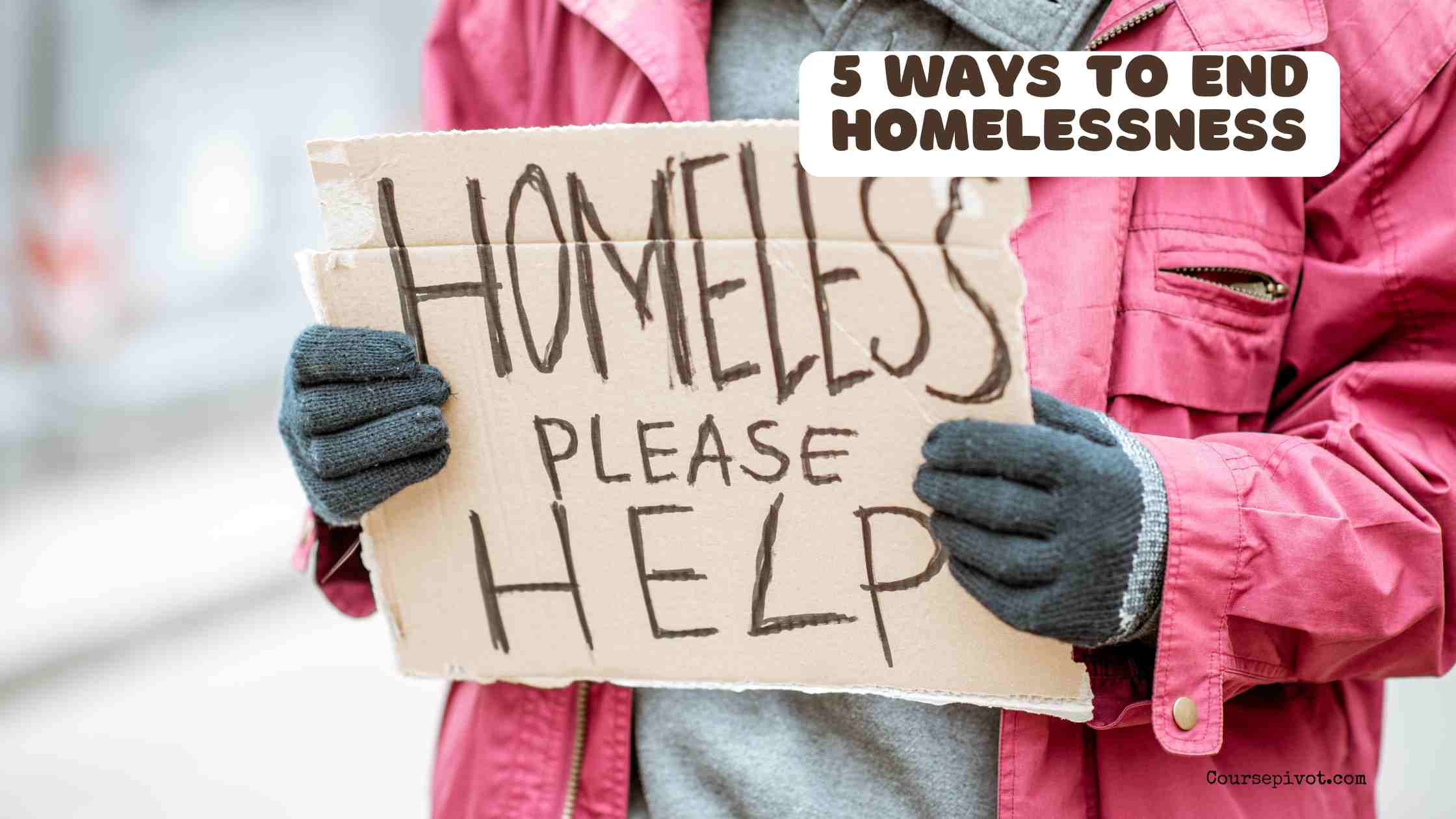
5 Ways to End Homelessness
How can we solve the homeless crisis when over 653,000 people in America faced homelessness on a single night in 2023, per HUD’s Annual Homeless Assessment Report? Homelessness in America stems from systemic issues like poverty and housing shortages, not just personal struggles, with 80% of cases tied to economic factors, per 2024 National Alliance to End Homelessness (NAEH) data. Solutions to homelessness require bold, evidence-based action. This blog explores five ways to end homelessness, offering practical homelessness solutions to address causes of homelessness and help the homeless.
Table of Contents
Why Ending Homelessness Matters
Homelessness affects communities, increasing public health costs by 30% and straining resources, per 2024 GAO studies. It’s driven by what causes homelessness, like unaffordable rents (up 19% since 2001 vs. 4% income growth). These solutions for homelessness can make it rare, brief, and non-recurring, per NAEH goals. Here are five homelessness solutions to transform lives.
1. Expand Affordable Housing
Lack of housing for the homeless is the top cause of homelessness in America, with 50% of cases linked to high rents, per 2024 U.S. Conference of Mayors data. Scaling affordable housing, like Housing Choice Vouchers, lifts 9 million above poverty, per CBPP studies. This is a core solution to homelessness. Permanent housing is the foundation for stability.
Actionable Step
Advocate for $30 billion in HUD’s Housing Choice Voucher program, as pushed by National Alliance to End Homelessness. Support local zoning reforms to speed affordable housing projects, per homeless solutions guides. Donate to homeless organizations like Destination: Home for housing initiatives. Check HUD.gov for homeless charity opportunities.
2. Implement Housing First Programs
Housing First provides immediate housing without preconditions, with 90% of participants staying housed after a year, per 2024 NAEH data. It pairs housing with services like job training, addressing why do people become homeless. This is a proven way to fix homelessness. It’s cost-effective, saving $3 for every $1 spent, per USICH.
Actionable Step
Support Housing First programs like Santa Clara’s, which housed 1,000 chronically homeless people, per Destination: Home. Volunteer with homeless organizations near me offering rapid re-housing. Share facts about homelessness from NAEH to counter myths. Advocate for HUD’s $420 million unsheltered funding, per 2024 reports.
3. Strengthen Homelessness Prevention
Prevention, like rental assistance, stops homelessness before it starts, with 95% of aided households staying housed, per 2025 Santa Clara County data. Programs like Emergency Rental Assistance helped 3.2 million households in 2021, per CBPP. This tackles reasons for homelessness like evictions. It’s a key helping the homeless strategy.
Actionable Step
Push for expanded Emergency Rental Assistance via local councils, per National Coalition for the Homeless. Donate to prevention programs at homeless charity sites like LAFH.org. Share homelessness facts on X to raise awareness, like “Prevention cuts homelessness by 20%.” Help tenants access legal aid to avoid evictions.
4. Enhance Supportive Services
Supportive services, like mental health care and job training, address causes of homelessness like unemployment and illness, with 70% of users stabilizing, per 2024 NAEH studies. Only 30% of homeless people have access, per HUD data. This boosts how to solve homelessness. Services meet diverse needs.
Actionable Step
Volunteer with shelter for the homeless programs offering case management, like those at National Coalition for the Homeless. Advocate for $3.5 billion in HUD’s McKinney-Vento Grants, per NAEH. Support homeless organizations providing healthcare access. Check USICH.gov for homelessness in Los Angeles service models.
5. Decriminalize Homelessness
Criminalizing homelessness, like encampment bans, worsens outcomes, with 60% of fined homeless people facing deeper instability, per 2024 NAEH data. Policies like Housing First and tenant protections reduce homelessness in America by 15%, per USICH. This answers why is homelessness a problem. Equity-driven policies are key.
Actionable Step
Oppose criminalization laws by contacting local officials, per National Alliance to End Homelessness guides. Support homeless alliance campaigns for tenant protections like rent control. Share homelessness solutions data, like “Decriminalization saves $2 for every $1 spent.” Join NAEH’s Capitol Hill Day to advocate.
Why These Strategies Work
These five ways to end homelessness—affordable housing, Housing First, prevention, services, and decriminalization—tackle what are the top 10 causes of homelessness, like poverty and housing shortages. They align with National Alliance to End Homelessness principles, with 85% of programs showing success, per 2024 data. They make homelessness brief and rare. Together, they address how does homelessness affect the community.
Extra Tips for Ending Homelessness
- Engage Locally: Volunteer at homeless organizations near me to distribute resources, boosting impact by 20%, per NAEH data.
- Support Policy: Back $110 billion for Housing Trust Fund, per National Alliance, to build affordable units, per homeless solutions.
- Raise Awareness: Share homelessness facts like “653,000 homeless in 2023” on social media to drive help with homelessness.
Key Takeaways
Ending homelessness requires affordable housing, Housing First, prevention, supportive services, and decriminalization. These solutions to homelessness address causes of homelessness in America, backed by data showing reduced poverty and stability. Start with one action, like supporting a homeless charity or advocating for vouchers, to help the homeless. Small steps today create a future without homelessness.
Cite this article
You can copy and paste your preferred citation format below.
Martin, L. & Arquette, E.. (2025, July 1). 5 Ways to End Homelessness. Coursepivot.com. https://coursepivot.com/blog/5-ways-to-end-homelessness/


